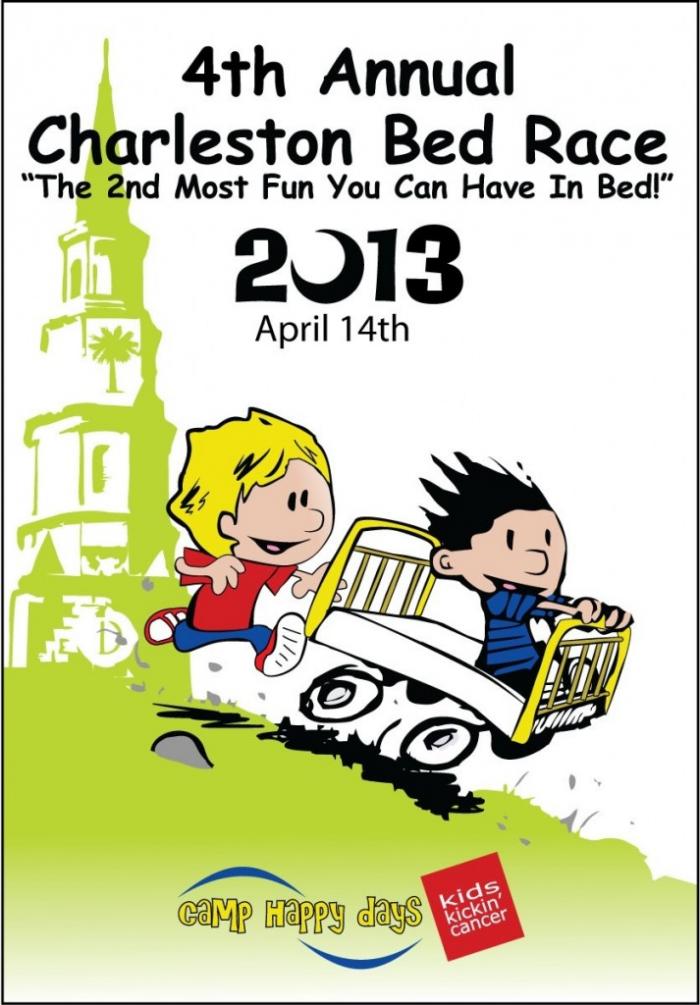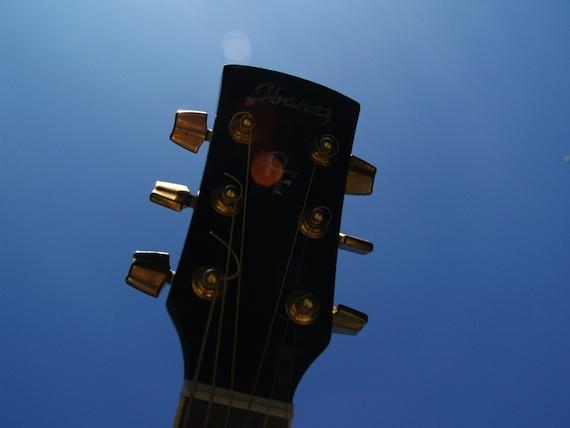Flickr user tonyduckles
Update June 20, 2012 Even though Predice Hendricks didn't successfully achieve the KickStarter funding he was asking for that hasn't stopped him.
Hendricks has been accepting donations over at his blog and has a fully functional prototype of the Acoustic tremolo system. According to his blog, Hendricks will be premiering his patented invention at Star MusicCo in Myrtle Beach on Saturday, June 30, 2012.
We'll keep you posted as more information is released, until then make sure to hop on over to Hendricks' blog and check out the Facebook event page for this upcoming demonstration.
Read all abot the KickStarter project and what an Acoustic tremolo system is below.
Update March 3, 2012: Only 13 days are left to help fund local musician and inventors KickStarter project.
If you haven't checked out Predice Hendricks KickStarter project you should do so ASAP. There's only a week and a half left to get this great invention funded. Read the full story below and then hop on over to Hendricks' KickStarter project to make a donation and watch the newly added animation of the acoustic tremolo system.
First report: If you've ever been out and about along the Strand in the summer, more than likely you've seen and heard local musician, Predice Hendricks, playing with his band, That's Cool and Stuff.
Besides being a musician, woodworker, and doting father of three, Predice is also a dreamer and now inventor. About 21 years ago, Predice had an idea for an tremolo system for acoustic guitars. Predice writes on his KickStarter page, "I noticed that when playing my Acoustic guitar, I found myself wanting to do things on my Acoustic guitar like I do on my electric guitar with the whammy bar (being able to hold and vibrato whole chords, not just notes!). I found this could not be achieved because there were no Acoustic guitars with tremolo systems that I could find on the market." After years of working on his design in 2002 he started the patent process and as of June 2, 2011 he was awarded the patent for his acoustic tremolo system.
Now, with patent in hand he needs some help getting his prototypes ready to take the the National Association of Music Merchants (NAMM) show that is held annually in Nashville, TN. There he hopes to show off his invention and get guitar players excited and instrument-makers interested.
As of today there is only 19 days left to pledge money for his endeavor over on KickStarter
Related:
- #MYRmusic: Ten Toes Up seeking a kickstart for their next album
- Local artist acquires Kickstarter funding for graphic novel
- Charleston throwback slasher flick needs a little kickstart
What's a tremolo system?
I wasn't exactly sure what a tremolo system was so I reached out to my friend Steve Senes, another Myrtle Beach musician and winner of Guitar Player Magazine's Guitar Superstar 2009 and he gave a pretty simple explanation:
A tremolo system (more accurately, a Vibrato system) gives the ability for the player to add vibrato to his playing, typically by pushing down on or lifting up on a 'bar' connected to the bridge of the guitar. Pushing down on the bar lowers tension on the strings, thus lowering the pitch of the notes being played. Lifting up on the bar (on some systems) raises the tension and pitch. Subtle variance of pressure on the bar causes very slight fluctuations in pitch, hence the term Vibrato (Tremolo is actually the same note just being played rapidly over and over). More drastic pressure on the bar moves the bridge more and gives more obvious variance in tone, such as the 'Dive Bomb' that was common in 80's guitar playing (ie the end of the Van Halen solo Eruption). Another player who used the Tremolo system a lot was Dime from Pantera. Steve Vai as well.
The system works by counterbalancing string tension with a few springs, which are usually in the back of the guitar, in cavity that has been made for the tremolo system. The Bridge usually rests on a fulcrum point. When the bar is pushed down, the bridge 'tilts' forward, releasing tension on the string while increasing tension on the springs. When the player eases tension on the bar, the spring tension returns the bridge to it's 'zero' point and the strings (theoretically) to their original pitch. I say theoretically because there are a lot of variables involved in this actually happening. Tremolo systems have existed on electric guitars nearly since the electric guitar became popular (I think the Fender Stratocaster has always had a temolo, since it's introduction in the late 50's) but didn't come into prominent use until the late 70's/early 80's because heavy use knocked a guitar way out of tune. In the early 80's, Flyd Rose developed and marketed a locking tremelo system where the strings were locked in at the bridge and at the top of the neck by a clamping mechanism. At the bridge, the 'ball end' of the string is cut off and clamped into place on the bridge. The theory behind this is that when the bar is engaged, the string does not move over any surface, eliminating any change in string length (which affects pitch) and eliminates and friction, binding at the nut or tuning head. While not a perfect solution, it improved tuning stability a thousandfold and made it possible for people to get their whammy on.
Thanks for the info, Steve. You can download his album De-Evolution Of Theory on iTunes and Amazon .


